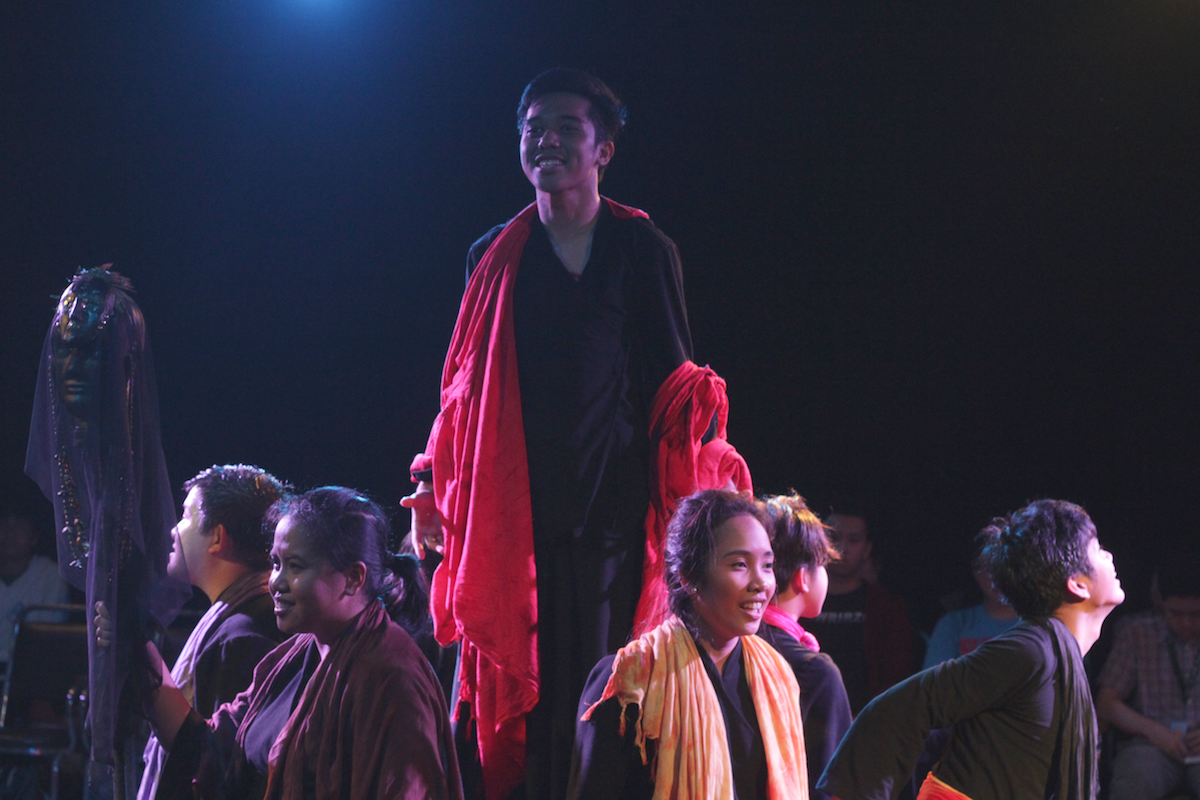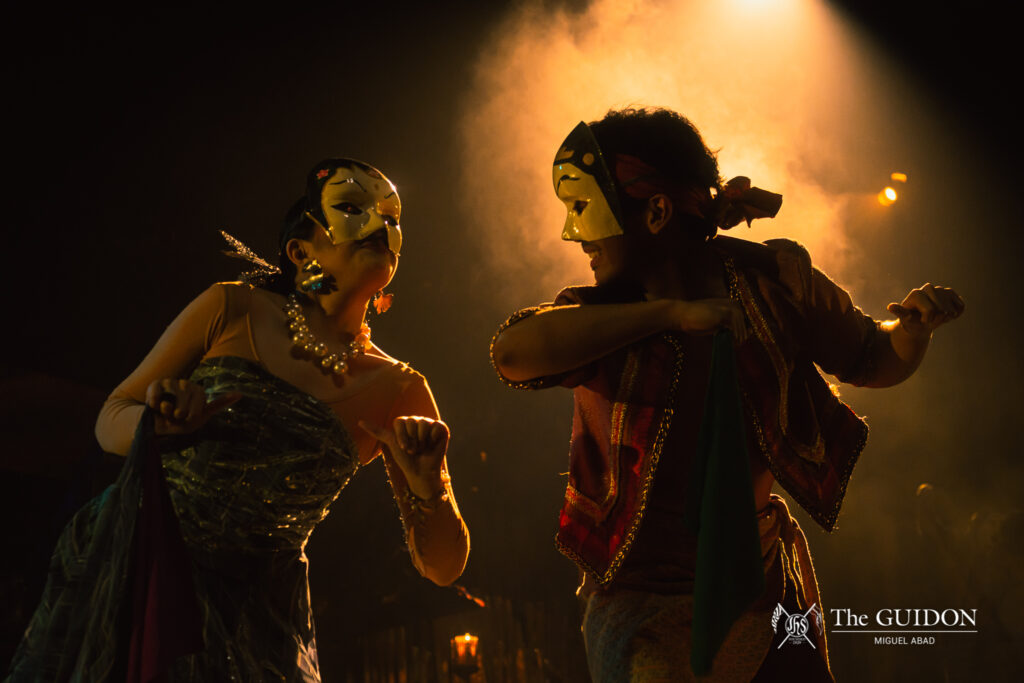They come in a flurry of sound and motion. Black robes flailing rapidly across the bare stage, voices resonating rhythmically, mouths moving in undeterred harmony. The only color seen as the figures prance around the stage are the bright sarongs wrapped around their bodies. The faces are unblemished, the bodies bare. They stretch, contort, leap, and twist—painting the stage in a whirlwind of dynamism. This is how they tell the story—in movement.
In the Ateneo Entablado’s first production for the year, they chose to feature a retelling of Ang Sultan Saif and Haring Malupit written by Severino Reyes under the penname Lola Basyang. Gulo ng Gugugulong na Ulo is set in the island of Agam-Agam as the king of the land is put on trial for supposedly causing a storm which threatens to sink the island.
Written by Jerome Ignacio and directed by Jethro Tenorio, the production plays on a storytelling that, although visual, is defined by an active imagination to paint the vibrant and chaotic island of Agam-Agam. Complemented by the outstanding choreography of Toneng Aguilar, the play recreates a storytelling of childlike vigor and wonder.
Made of boxes that served as the thrones, caskets, and beds of the island, the stage served as building blocks to the story. The blocks shift quickly, and as the scenes are built silently in our minds, the world changes with every step. The boxes are black, but their shapes infinite. However, the stage is in the center of the audience, which makes some scenes difficult to watch.
Together with the outbreak of motion caressing the stage is the equally untamable music that accompanies it. Under the direction of Luis Enriquez, the pulsating tempo and the melodious rhythm create this loud, raucous anthem of tribal unrest. Paired with the fast-paced and violent use of lights moving in erratic synchronization, turmoil and discord are set soundly throughout the play.
The cast moves with intent, swaying the sarongs around their body as they change characters in quick steps across the stage. The cast of seven portrays a kingdom, their voices often in unison or in chaotic dissonance. From elders, priests, governors and a deceitful uncle, this little cast made of VJ Serag, Alija Pandapatan, Jonnel Inojosa, Mark Legaspi, Lei Ramos, and Junna Obogne, create a symphony of dysfunction, chaos, and color from a stage barely decked in anything.
The ensemble made the play, but it was Serag’s portrayal of accused Haring Tarong that was the foundation of its brilliance. Filled with authority and a fine layer of humility, Serag’s vivid performance of the tortured king is heartbreaking and, at times, subtly inspiring.
A narrative on the turbulent relationship of leader and civilian, the play asks, “Who is to blame?” and “Who is to lead?” With simple answers, you are to blame, you are to lead. When the raging storm clears and the turmoil is tamed, the answer shall always be clear.
Gulo ng Gugulong na Ulo is a ritual of Philippine storytelling—rich, vivid, and grounded on communal morality. It is also an engagement of emotion, flaring in dips and divots, in feral movements, and visceral rhythms. It is unfathomably loud and intense—entropic. It is also absolutely touching. The citizens of Agam-Agam entered the stage in flurry of sound and motion; they leave in pleasant stillness.
—
The production will be staging its last show on July 18, 2015 at 10:00 AM, 4:30 PM, and 7:30 PM at the Rizal Mini Theater.






